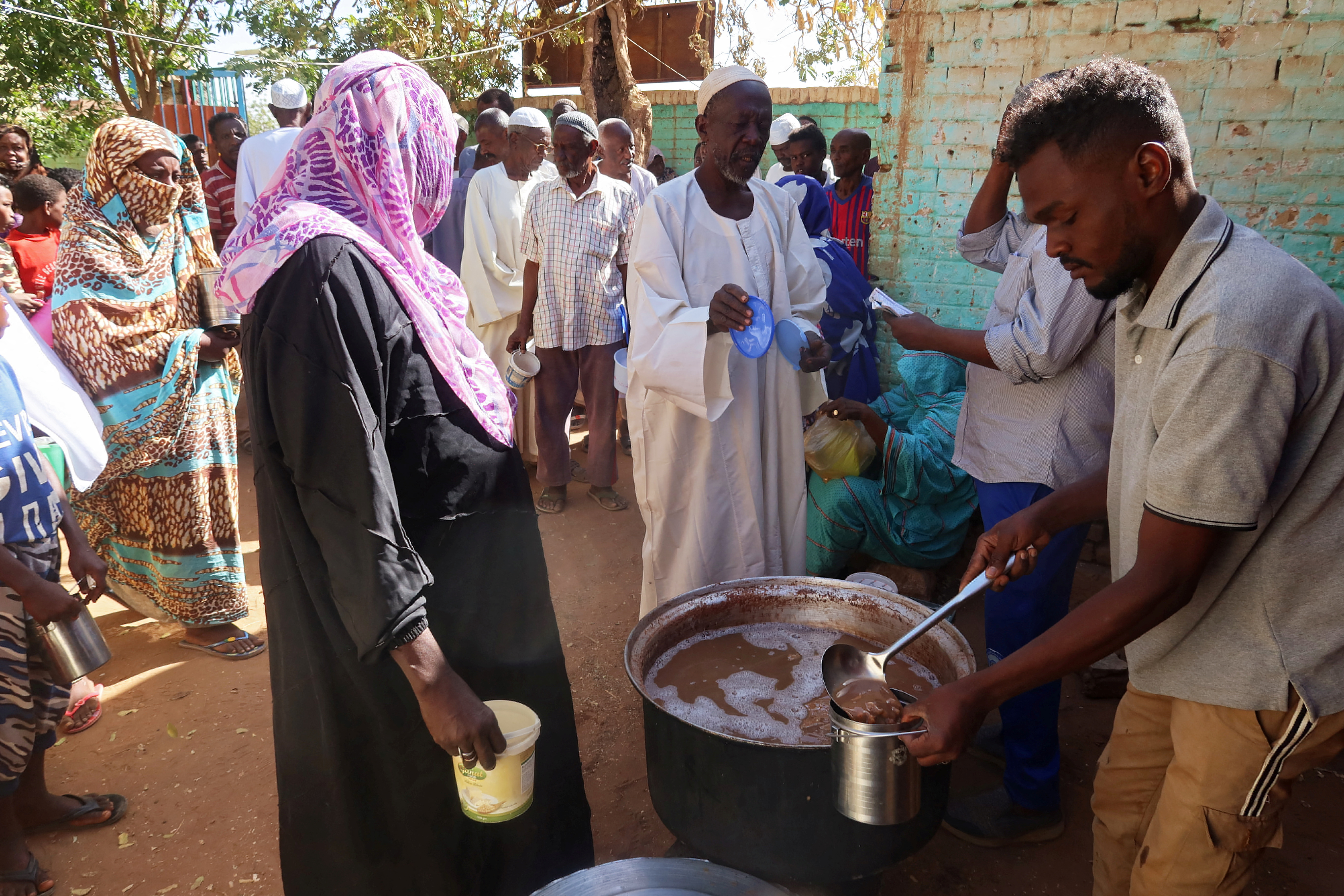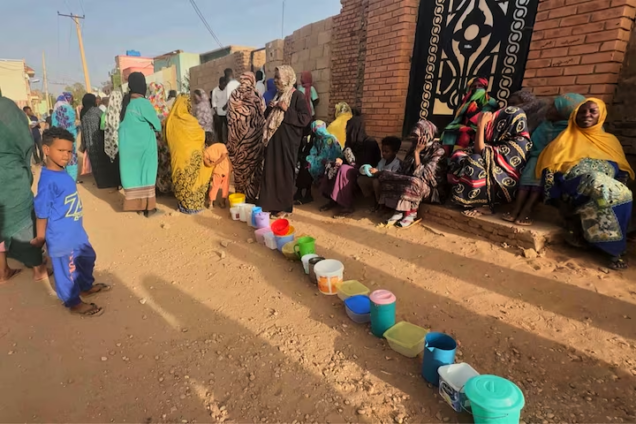An estimated 756,000 people in Sudan could face catastrophic food shortages by September, according to a preliminary projection used by United Nations agencies and aid groups to determine whether to officially declare a famine.
The preliminary results, as of June 1 and seen by Reuters, reflect a rapidly deteriorating situation in the war-torn country. The most recent previous projection, released in December, showed that 17.7 million people, or 37% of the population, faced high levels of food insecurity, but none were considered in a catastrophic situation.
Now, an estimated 25.6 million people, or 54% of the population, face critical shortages, including more than nine million people in an emergency situation or worse.
The latest projection is preliminary and could change. It will require approval by the military-controlled Sudanese government and U.N. and international agencies. The government has previously denied the country is experiencing famine.
The new analysis was done by the Rome-based Integrated Food Security Phase Classification (IPC), an initiative of U.N. agencies, regional bodies and aid groups. The data is expected to be incomplete. In March, the IPC said security threats, roadblocks and telecommunications outages in Sudan were hindering its ability to do assessments.
The IPC, which analyzes food insecurity and malnutrition data, hopes to publish a report on Sudan in the next several weeks, according to people familiar with the matter.
Fatima Eltahir, a Sudanese government official who is also the IPC’s chairwoman in Sudan, told Reuters: “We are not done yet. There are no final results.”
Lavonne Cloke, an IPC spokesperson, said the analysis is “ongoing,” adding that it’s not yet clear when it will be finalized.
The latest projection for Sudan comes at a time when another conflict zone – Gaza – is also experiencing severe food shortages. In March, the IPC said famine was imminent as 1.1 million people, about half of Gaza’s population, were expected to experience catastrophic food insecurity.

In Sudan, fighting broke out in the capital Khartoum in April 2023 and quickly spread across the country, reigniting ethnic bloodshed in the western Darfur region and forcing millions to flee.
The number of people internally displaced in Sudan due to current and past conflict has surpassed 10 million, the United Nations migration agency said this week. The country is already experiencing the world’s largest displacement crisis.
Last month, U.N. agencies also said Sudan was at "imminent risk of famine.” About 3.6 million children are acutely malnourished, according to a joint statement by U.N. chiefs, including the high commissioner for human rights.
Whether a famine will be declared in Sudan remains unclear. Governments sometimes challenge famine data and projections. To date, U.N. agencies and other organizations only have declared famines twice since the IPC warning system was created 20 years ago: in Somalia in 2011, and in South Sudan in 2017.
The determination of whether to declare a famine is based on a scale used by the IPC that has five classifications, ranging from Phase 1, which reflects no serious food issues, to Phase 5, which represents either a catastrophe or, even worse, a famine. Phases 3, 4 and 5 are all considered crisis situations or worse.
The ratings are determined using a complex set of technical criteria, which include measurements of starvation, malnutrition and mortality. In areas formally designated as Phase 5 famine, more than two people per 10,000 are dying daily, among other criteria.
The latest preliminary IPC projection for Sudan states that between June and September, an estimated 756,000 people in Sudan will face Phase 5 catastrophe. This means that the country hasn’t technically reached widespread famine conditions, but it is still considered a major crisis.
The projection identified 32 localities and clusters where the population was suffering catastrophic food shortages. They included two areas where 15% of the population faced IPC 5 catastrophic conditions – the city of al-Fashir, the capital of North Darfur; and a nearby camp for internally displaced people called Zamzam. Three other areas were cited where 10% of the population had reached the threshold.
Many of the areas in the projection were seized by the paramilitary Rapid Support Forces (RSF), which has been fighting the Sudanese army.
On Tuesday, a top U.S. diplomat told Reuters that parts of Sudan are already in famine, adding that the extent of extreme hunger remained unclear.
"I think we know we are in famine," said Tom Perriello, the U.S. special envoy to Sudan. "I think the question is how much famine, how much of the country, and for how long."
Latest Stories
-
Expansion Drive: Takoradi Technical University increases faculties
3 hours -
SHS heads demand payment of outstanding funds before reopening of schools
4 hours -
We thank God for the 2024 general elections – Akufo-Addo
4 hours -
Coconut Grove Beach Resort marks 30 years of excellence with memorable 9 lessons & carols service
4 hours -
WAFU B U-17 Girls’ Cup: Black Maidens beat Nigeria on penalties to win inaugral tournament
5 hours -
Real Madrid beat Sevilla to keep pressure on leaders Atletico
6 hours -
Liverpool put six past Spurs to go four points clear
6 hours -
Manchester United lose 3-0 at home to Bournemouth yet again
6 hours -
CHAN 2024Q: ‘It’s still an open game’ – Didi on Ghana’s draw with Nigeria
6 hours -
CHAN 2024Q: Ghana’s Black Galaxies held by Nigeria in first-leg tie
7 hours -
Dr Nduom hopeful defunct GN bank will be restored under Mahama administration
8 hours -
Bridget Bonnie celebrates NDC Victory, champions hope for women and youth
8 hours -
Shamima Muslim urges youth to lead Ghana’s renewal at 18Plus4NDC anniversary
9 hours -
Akufo-Addo condemns post-election violence, blames NDC
9 hours -
DAMC, Free Food Company, to distribute 10,000 packs of food to street kids
10 hours

